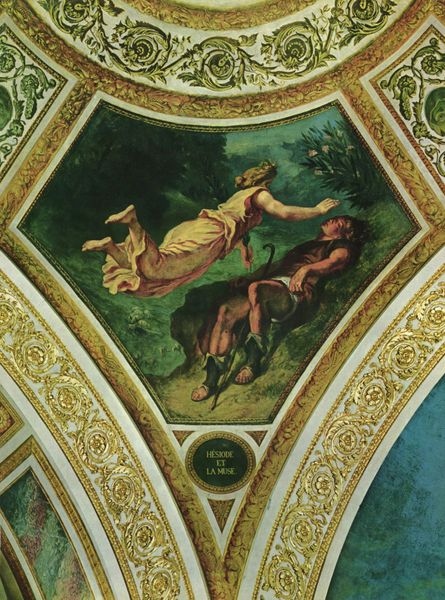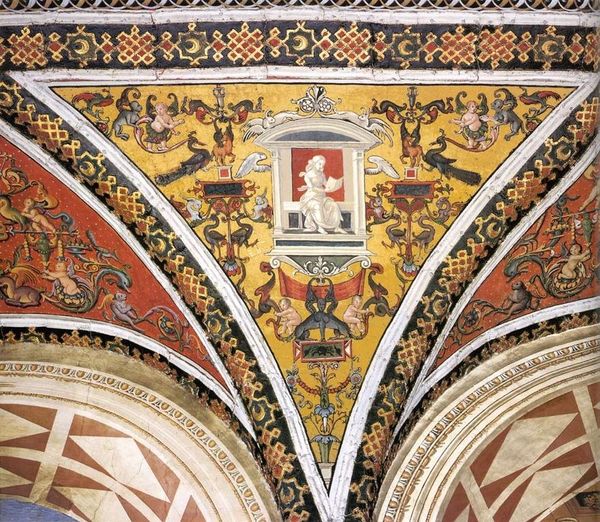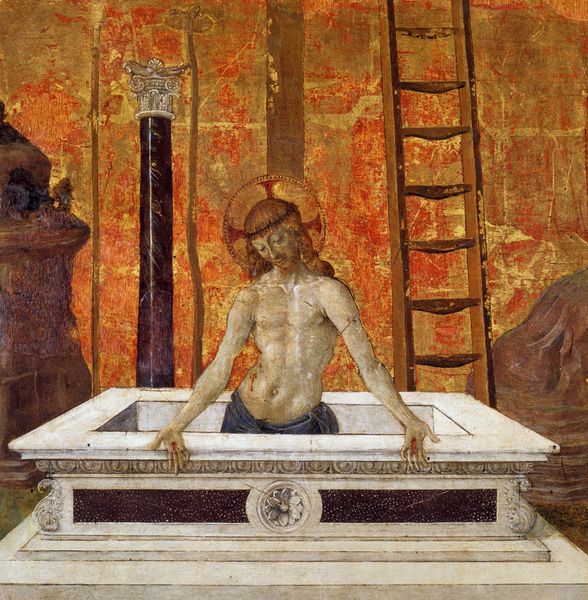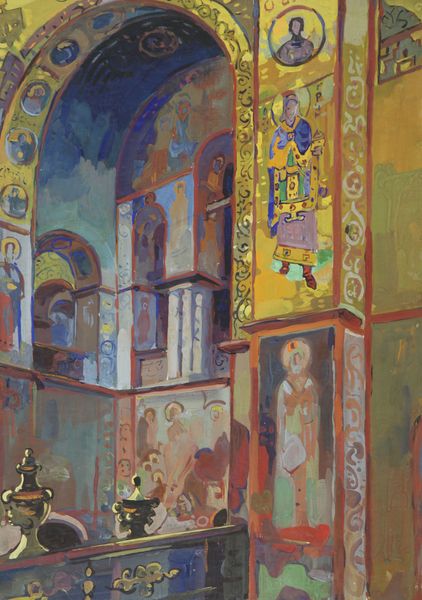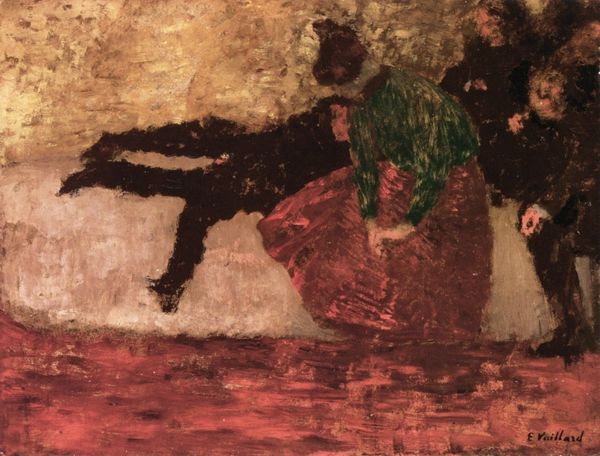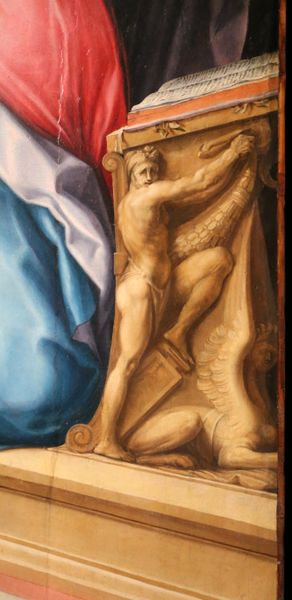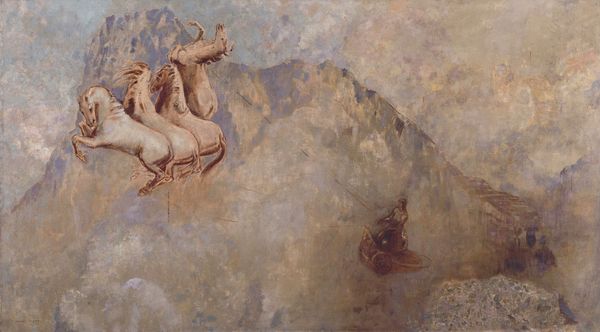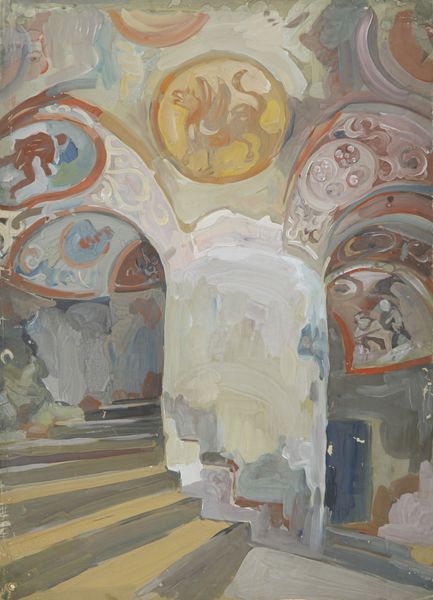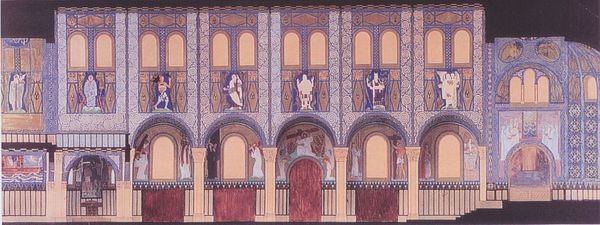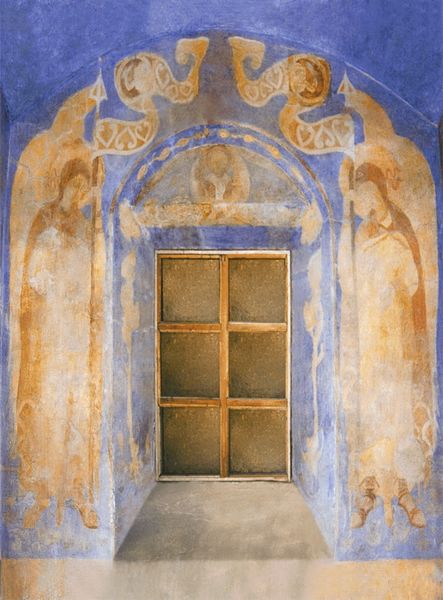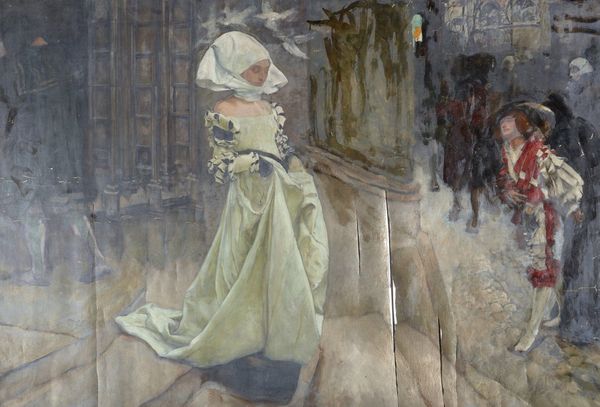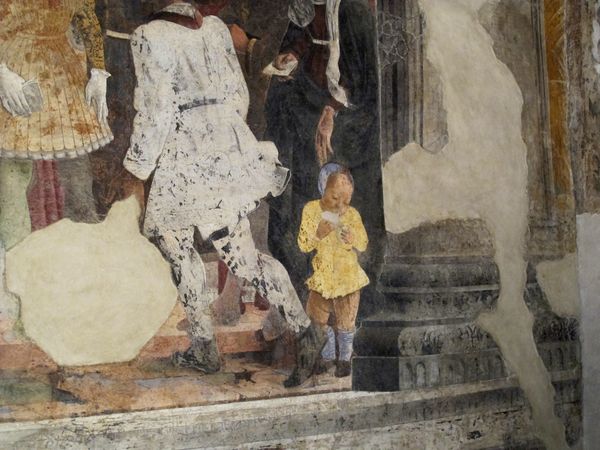
oil-paint
#
portrait
#
impressionism
#
oil-paint
#
figuration
#
oil painting
#
painterly
#
genre-painting
Dimensions: 177 x 77 cm
Copyright: Public domain
Curator: I’m instantly transported. There's such a dreamy quality to Degas' "Miss La La at the Cirque Fernando," painted in 1879. It's as if the world is tilted on its axis, much like the acrobat herself. What’s your initial impression? Editor: An exercise in perspective, quite literally. The painting showcases Degas' interest in popular culture and performance—a specific kind, the circus spectacle. Degas really understood the socio-economics of art in this epoch, representing the rise of mass entertainment that redefined social experience. But the way he does so—vertiginously—adds to that analysis in terms of a social and perceptual effect of such performances. Curator: Precisely! Her strength, hanging by only a rope clenched in her teeth. But the color palette keeps it from feeling gritty. It almost feels like she’s floating among marmalade clouds rather than a performance at Cirque Fernando in London. There's this curious mix of real-world observation with dreamy surrealism that makes me feel like I can hear the distant organ. Editor: London? That’s interesting to me that you pick that aspect as key to *feeling* a specific impression: this suggests to me the painting could easily communicate this sentiment in another place other than London too, making the idea of this spectacle more ‘globalised’ for us today, especially because the actual performance would probably resonate somewhere entirely outside of ‘place’. Now, for an acrobat in London, at this period…the social and historical setting of this painting can show the social commentary and realities for performers, women particularly, who existed within these transient economies of spectacle. Curator: Absolutely, and think about Degas, placing us, the viewer, right among the rafters. That low vantage point does some serious perspective-bending with the architectural details! What does it tell us to be placed there and given this perspective on female performance at the Cirque? Editor: It’s a purposeful elevation, placing the gaze both close to, yet definitively beneath the spectacle, emphasizing Miss La La's precarious position—both physically, and socially as an entertainer during this period of change within social expectations, economic status and technological revolution. Curator: It’s captivating. The whole piece speaks volumes. What started as a performance captured in oil becomes a reflection of social forces… It lingers in the mind. Editor: Indeed, a vibrant snapshot of an era, made all the more relevant when we recognize that it questions how one understands both personal strength and its representation on a public scale.
Comments
No comments
Be the first to comment and join the conversation on the ultimate creative platform.
